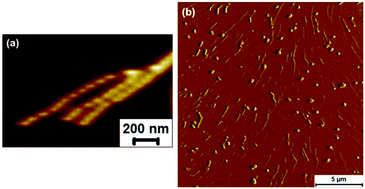In vitro assembly of a viral envelope
Abstract
Viruses such as influenza and Ebola are enveloped in lipid bilayers annexed from host cells and containing glycoproteins essential for the infection process. At the molecular level little is known about the assembly process in terms of physical interactions between the lipids and glycoproteins. In this paper we assemble HIV glycoproteins in lipid vesicles in order to examine envelope assembly, a process that is usually only executed under control of a host cell. Using atomic force microscopy it was possible to observe fusion of individual envelope like particles, and contrast this with the behaviour of lipid vesicles without envelope glycoproteins. It was found that the inclusion of glycoproteins caused the vesicles to distort and that the subsequent fusion “footprint” with a lipid bilayer was related to the envelopes' unique morphology. This non-spherical morphology suggests that the presence of a viral capsid may be essential for the stability of an enveloped virus. Interactions between trans-membrane gp41 and gp120, the spikes protruding from a virion, were examined using supported lipid bilayers. Interactions between the gp120 and membrane-located gp41 resulted in the assembly of unusual molecular wires, one molecule in height and with a zigzag arrangement of gp120 molecules. In this work we have shown that purely physical/chemical interactions have dramatic effects on glycoprotein/lipid assembly and should be considered in the development of virus based technologies such as virosomes.


 Please wait while we load your content...
Please wait while we load your content...